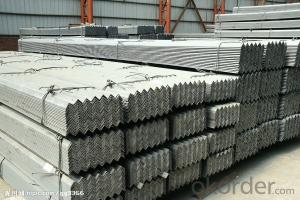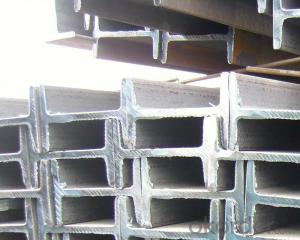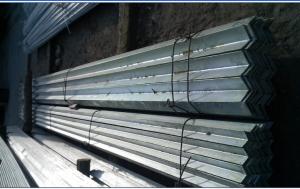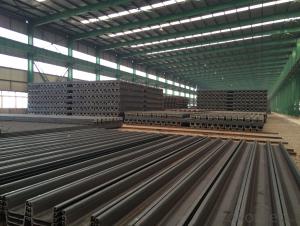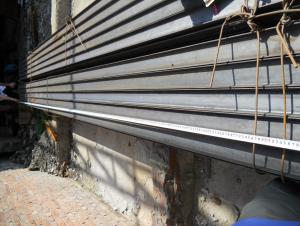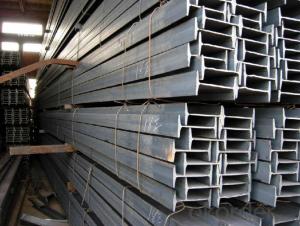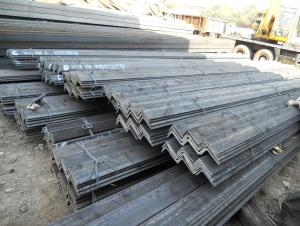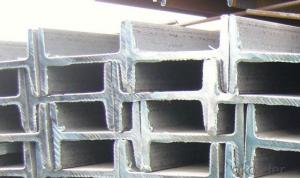HR Steel Rail Light Made in China with High Quality and Competitive Prices
- Loading Port:
- Tianjin
- Payment Terms:
- TT or LC
- Min Order Qty:
- 25 m.t.
- Supply Capability:
- 100000 m.t./month
OKorder Service Pledge
OKorder Financial Service
You Might Also Like
Product Description:
OKorder is offering HR Steel Rail Light Made in China with High Quality and Competitive Prices at great prices with worldwide shipping. Our supplier is a world-class manufacturer of steel, with our products utilized the world over. OKorder annually supplies products to European, North American and Asian markets. We provide quotations within 24 hours of receiving an inquiry and guarantee competitive prices.
Product Applications:
HR Steel Rail Light Made in China with High Quality and Competitive Prices are ideal for structural applications and are widely used in the construction of buildings and bridges, and the manufacturing, petrochemical, and transportation industries.
Product Advantages:
OKorder's HR Steel Rail Light Made in China with High Quality and Competitive Prices are durable, strong, and resist corrosion.
Main Product Features:
· Premium quality
· Prompt delivery & seaworthy packing (30 days after receiving deposit)
· Corrosion resistance
· Can be recycled and reused
· Mill test certification
· Professional Service
· Competitive pricing
Packaging & Delivery:
Packaging Detail: products are packed in bundle and then shipped by container or bulk vessel, deformed bar is usually naked strapping delivery, when storing, please pay attention to moisture proof. The performance of rust will produce adverse effect.
Each bundle weight: 2-3MT, or as required
Payment term: TT or L/C
Delivery Detail: within 45 days after received advanced payment or LC.
Label: to be specified by customer, generally, each bundle has 1-2 labels
Trade terms: FOB, CFR, CIF
FAQ:
Q1: Why buy Materials & Equipment from OKorder.com?
A1: All products offered byOKorder.com are carefully selected from China's most reliable manufacturing enterprises. Through its ISO certifications, OKorder.com adheres to the highest standards and a commitment to supply chain safety and customer satisfaction.
Q2: How do we guarantee the quality of our products?
A2: We have established an advanced quality management system which conducts strict quality tests at every step, from raw materials to the final product. At the same time, we provide extensive follow-up service assurances as required.
Q3: How soon can we receive the product after purchase?
A3: Within three days of placing an order, we will begin production. The specific shipping date is dependent upon international and government factors, but is typically 7 to 10 workdays.
Images:
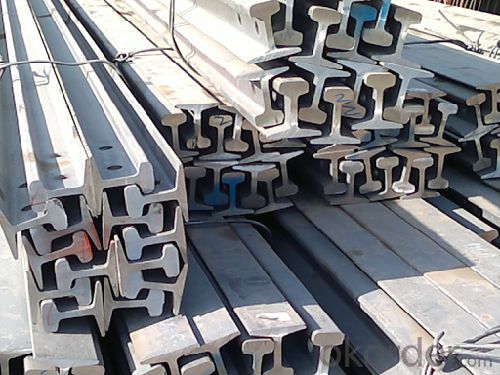
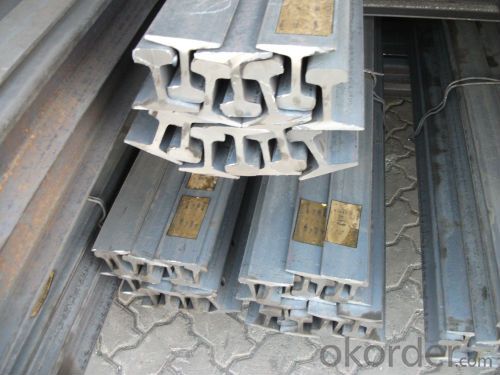
- Q: Are steel I-beams suitable for multi-story buildings?
- Yes, steel I-beams are suitable for multi-story buildings. Steel I-beams are commonly used in construction due to their strength, durability, and load-bearing capabilities. They provide structural support and stability to the building, allowing for the construction of multiple floors and the ability to withstand heavy loads. Additionally, steel I-beams can be easily fabricated and customized to meet the specific needs and requirements of multi-story buildings. Their versatility and availability make them a popular choice for constructing high-rise buildings and other multi-story structures.
- Q: Can steel I-beams be used for exhibition halls?
- Yes, steel I-beams can be used for exhibition halls. Steel I-beams are commonly used in construction due to their strength and durability, making them suitable for supporting large structures like exhibition halls.
- Q: How do steel I-beams handle dynamic loads?
- Steel I-beams possess exceptional efficiency and strength when it comes to handling dynamic loads. The unique design of an I-beam enables it to evenly distribute the load along its length, thereby granting it remarkable resistance against bending and deformation under dynamic loads. This notable characteristic is a result of the I-beam's capacity to withstand both compression and tension forces. Whenever an I-beam is subjected to a dynamic load, the load is predominantly borne by the top and bottom flanges of the beam, while the web sandwiched between them provides supplementary support. The vertical flanges effectively counteract bending, while the horizontal web effectively resists shear forces. This particular structural arrangement ensures the dispersion and even distribution of the load, effectively averting the occurrence of concentrated stress points that could potentially lead to failure. Moreover, the utilization of steel as the primary material for constructing I-beams offers additional advantages in managing dynamic loads. Steel is renowned for its commendable strength-to-weight ratio and exceptional resistance to fatigue, thereby making it an ideal material for structures that experience dynamic loads. Steel I-beams can endure repeated cycles of loading and unloading without experiencing significant fatigue or deformation, thereby guaranteeing their long-term structural integrity. Furthermore, steel I-beams can be further reinforced and optimized to cater to specific dynamic load conditions by adjusting their dimensions, shape, and material properties. This ability empowers engineers to customize I-beams to meet the precise requirements of diverse dynamic load scenarios, such as those encountered in heavy machinery, moving vehicles, or seismic activities. In conclusion, steel I-beams are an excellent choice for handling dynamic loads due to their effective distribution of forces, resistance to bending and deformation, and inherent strength and fatigue resistance. Their ability to withstand repeated loading and unloading cycles renders them a dependable option for a broad range of applications involving dynamic loads.
- Q: What is the maximum span length for steel I-beams?
- The maximum span length for steel I-beams depends on various factors, such as the load being applied, the type and grade of steel used, and the desired deflection criteria. In general, steel I-beams can span significant distances due to their high strength-to-weight ratio. However, it is difficult to provide a specific maximum span length without considering these aforementioned factors. Structural engineers typically analyze and design steel I-beams for specific projects to ensure they meet the required load-bearing capacity and deflection limits.
- Q: What are the different sizes available for steel I-beams?
- The sizes available for steel I-beams vary depending on the manufacturer and the specific requirements of a project. However, common sizes for steel I-beams range from 3 inches to 24 inches in height, with flange widths ranging from 2.33 inches to 10.5 inches.
- Q: Can steel I-beams be used in educational or institutional buildings?
- Certainly, educational or institutional buildings can indeed utilize steel I-beams. Due to their strength, durability, and versatility, steel I-beams are widely employed in construction. They offer structural support and have the capacity to bear heavy loads, rendering them perfect for extensive buildings. Furthermore, steel I-beams possess fire, pest, and rot resistance, guaranteeing the safety and longevity of the structure. Their flexibility also permits the creation of open floor plans and broad spans, features often sought after in educational or institutional settings. All in all, steel I-beams are a favored option in the construction industry and can certainly find use in educational or institutional buildings.
- Q: Can steel I-beams be used in coastal areas with high humidity?
- Certainly, steel I-beams are suitable for use in coastal regions with elevated humidity. Nevertheless, it is crucial to acknowledge the potential detrimental impact that saltwater and high humidity may have on the steel beams due to corrosion. In such coastal settings, it is imperative to adequately safeguard or cover the steel beams to prevent corrosion. This objective can be accomplished by utilizing corrosion-resistant coatings, such as galvanization or epoxy paint. Furthermore, it is essential to conduct regular inspections and maintenance procedures to detect and rectify any signs of corrosion, while also ensuring the structural stability of the steel beams. By implementing these precautions, steel I-beams can be effectively employed in coastal areas with high humidity.
- Q: How do steel I-beams compare to other structural materials like wood or concrete?
- Steel I-beams have several advantages over other structural materials like wood or concrete. Firstly, steel is significantly stronger than wood, allowing for the construction of larger and more complex structures. Additionally, steel I-beams have a high strength-to-weight ratio, meaning they can support heavy loads while remaining relatively lightweight. This makes them more cost-effective and easier to transport and install compared to concrete. Furthermore, steel is highly durable and resistant to rot, pests, and weathering, providing a longer lifespan than wood. Overall, steel I-beams offer superior strength, versatility, and longevity compared to wood or concrete, making them a preferred choice for many construction projects.
- Q: Can steel I-beams be used for commercial office buildings?
- Indeed, it is common to utilize steel I-beams during the construction of commercial office buildings. These I-beams serve to offer structural support and possess the capability to withstand substantial loads, rendering them exceptionally suitable for the creation of expansive, multi-level structures. Their impressive attributes include remarkable strength, durability, and fire resistance, thus contributing to their widespread preference in commercial construction ventures. Moreover, steel I-beams can be readily tailored and manufactured to meet the precise design specifications of an office building.
- Q: Can steel I-beams be used for elevated storage racks or shelves?
- Yes, steel I-beams can be used for elevated storage racks or shelves. Steel I-beams are strong and durable, making them ideal for supporting heavy loads. They provide stability and structural integrity, making them suitable for storing heavy materials or equipment on elevated levels. Additionally, steel I-beams can be easily customized and designed to fit specific storage requirements, ensuring that the shelving system is efficient and safe. Overall, steel I-beams are a popular choice for elevated storage racks or shelves due to their strength, durability, and flexibility in design.
Send your message to us
HR Steel Rail Light Made in China with High Quality and Competitive Prices
- Loading Port:
- Tianjin
- Payment Terms:
- TT or LC
- Min Order Qty:
- 25 m.t.
- Supply Capability:
- 100000 m.t./month
OKorder Service Pledge
OKorder Financial Service
Similar products
Hot products
Hot Searches











